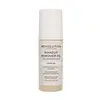What's inside
What's inside
 Key Ingredients
Key Ingredients

 Benefits
Benefits

 Concerns
Concerns

 Ingredients Side-by-side
Ingredients Side-by-side

Glycine Soja Oil
EmollientSorbeth-30 Tetraoleate
EmulsifyingIsoamyl Laurate
EmollientCaprylic/Capric Triglyceride
MaskingCamellia Sinensis Leaf Oil
AntioxidantOlea Europaea Fruit Oil
MaskingVitis Vinifera Seed Oil
EmollientArtemisia Vulgaris Oil
PerfumingSalvia Officinalis Oil
MaskingSimmondsia Chinensis Seed Oil
EmollientGlyceryl Caprylate
EmollientPrunus Amygdalus Dulcis Oil
Skin ConditioningMoringa Oleifera Seed Oil
EmollientMelaleuca Alternifolia Leaf Oil
AntioxidantEucalyptus Globulus Leaf Oil
PerfumingRosmarinus Officinalis Leaf Oil
MaskingLavandula Angustifolia Oil
MaskingTocopherol
AntioxidantCamellia Sinensis Leaf Extract
AntimicrobialCamellia Sinensis Leaf Water
MaskingArtemisia Vulgaris Extract
Skin ConditioningCarica Papaya Fruit Extract
Skin ConditioningPogostemon Cablin Leaf Oil
MaskingOlibanum
MaskingGlycine Soja Oil, Sorbeth-30 Tetraoleate, Isoamyl Laurate, Caprylic/Capric Triglyceride, Camellia Sinensis Leaf Oil, Olea Europaea Fruit Oil, Vitis Vinifera Seed Oil, Artemisia Vulgaris Oil, Salvia Officinalis Oil, Simmondsia Chinensis Seed Oil, Glyceryl Caprylate, Prunus Amygdalus Dulcis Oil, Moringa Oleifera Seed Oil, Melaleuca Alternifolia Leaf Oil, Eucalyptus Globulus Leaf Oil, Rosmarinus Officinalis Leaf Oil, Lavandula Angustifolia Oil, Tocopherol, Camellia Sinensis Leaf Extract, Camellia Sinensis Leaf Water, Artemisia Vulgaris Extract, Carica Papaya Fruit Extract, Pogostemon Cablin Leaf Oil, Olibanum
 Reviews
Reviews

Ingredients Explained
These ingredients are found in both products.
Ingredients higher up in an ingredient list are typically present in a larger amount.
This ingredient is an emollient, solvent, and texture enhancer. It is considered a skin-softener by helping the skin prevent moisture loss.
It helps thicken a product's formula and makes it easier to spread by dissolving clumping compounds.
Caprylic Triglyceride is made by combining glycerin with coconut oil, forming a clear liquid.
While there is an assumption Caprylic Triglyceride can clog pores due to it being derived from coconut oil, there is no research supporting this.
Learn more about Caprylic/Capric TriglycerideLavandula Angustifolia Oil is more commonly known as lavender essential oil. It is considered a fragrancing ingredient.
Lavender imparts a famous scent. While the smell is lovely, this ingredient and may sensitize skin in topical products. This is because about 85% of the oil is made up of linalool and linalyl acetate.
When exposed to air, these two compounds become strong allergens. This ingredient exhibits cytotoxicity at low concentrations; amounts of 0.25% have been shown to damage skin cells.
A study from Japan found this ingredient caused lavender sensitivity after widespread exposure.
Lavender essential oil has some antimicrobial, antibacterial, and anti-inflammatory properties. However, the cons of this ingredient may outweight the pros.
More research is needed to confirm lavender essential oil's effects when used in aromatherapy.
Lavandula Angustifolia is known as the English Lavender and famous for creating purple fields in Provence, France.
Learn more about Lavandula Angustifolia OilOlea Europaea Fruit Oil is the fixed oil obtained from the ripe fruit of the Olive. In other words - olive oil.
The primary contents of olive oil are glycerides of the fatty acids linoleic, oleic and palmitic.
Olive oil also contains antioxidants such as Vitamin E. Antioxidants may help reduce signs of aging by fighting unstable free-radical molecules. It also contains Vitamins A (retinol), D, and K.
The squalene in olive oil makes it a great emollient. Emollients help soothe and soften your skin by trapping moisture in. This makes olive oil a great skin moisturizer.
Studies show olive oil to have antibacterial and antifungal properties in low concentrations. Another study found olive oil irritated sensitive oily skin. We always recommend speaking with a professional about using this ingredient in your routine.
Due to the fatty acid content, this ingredient may not be fungal-acne safe.
Learn more about Olea Europaea Fruit OilThis oil comes from the seeds of the desert shrub called Jojoba. It is more commonly known as jojoba oil, a non-comedogenic oil.
Jojoba oil does not contain fragrance and has many fatty-acids, making it a great soothing ingredient.
It also contains Vitamin E, a great moisturizing ingredient. Vitamin E is also an antioxidant and protects your skin against oxidative damage.
This ingredient humectant properties, meaning it helps draw moisture from the air. This helps keep your skin hydrated.
While jojoba has antibacterial properties, it is only able to kill some strains of bacteria.
Studies also show it helps in wound healing. In fact, Indigenous cultures have used jojoba as a moisturizer and to help treat burns for centuries.
Fun fact: Jojoba oil similar to natural human skin sebum, so it has a great effect on dry skin. It is also promising with helping to regulate sebum production.
Due to its fatty acid content, Jojoba oil may not be fungal acne safe. We recommend speaking with a professional if you have any concerns.
Learn more about Simmondsia Chinensis Seed Oil